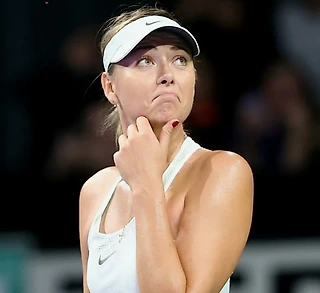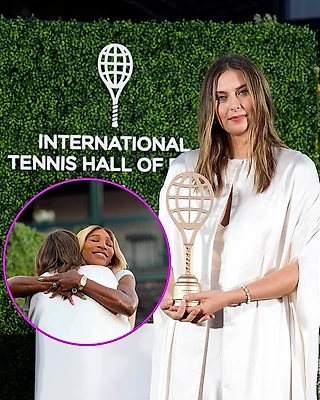Glam Slam
How women’s tennis is winning new audiences and making the richest Sportswomen in history even richer
By William Lee Adams/London
Видео:
http://edition.cnn.com/video/#/video/sports/2012/06/22/qmb-intv-womens-tennis-assoc-ceo-allaster.cnn
When Maria Sharapova sank to her knees on the red clay of the Stade Roland-Garros in Paris on June 9 after winning the French Open singles final, her emotional celebration marked the completion of a long comeback. In 2008 reconstructive shoulder surgery sidelined the Russian prodigy, who had won three Grand Slam titles by the age of 20, for 10 months. She watched her ranking plummet all the way to No. 126 and listened as critics wrote her off as a flash in the pan who burned brightly and then burned out. “When I won Wimbledon at 17, I thought that would be the most treasured moment of my career,” she said after the French final. “But when I fell down on my knees today, I realized that this was extremely special and even more so.”
Her victory was proof she has staying power—on and off the court. Sharapova’s agent, Max Eisenbud, tells Time that Sharapova, now 25, looks poised to sign two more lucrative sponsorship deals, cementing her place as the world’s highest-earning female sports star. Of the top 10 earners in women’s sports, a further six are her on-court rivals, including Americans Serena and Venus Williams and Danish star Caroline Wozniacki. They’ll all slug it out at the Wimbledon Championships, which begin June 25. For fans, it’s not just a chance to see great athleticism. It’s an opportunity to watch the world’s richest sportswomen trying to obliterate one another.
Top female tennis stars have raked in riches for decades, but in recent years the spread of the women’s game to new parts of the world, along with important changes in how the sport is run, has helped women’s tennis generate levels of economic activity and spectator interest previously unseen in women’s sports. A revamped schedule has made players more dependable, allowing tournaments to create effective promotional campaigns and woo new sponsors. That’s helped grow the prize pot. In 1970 female tennis players competed for total prize money of $300,000, and tournaments frequently paid female players a tenth of the winnings their male counterparts enjoyed. But prize money on the women’s tour has since increased from $75 million in 2008 to $96 million in 2012. Next year it will reach $100 million. At Wimbledon, the women will compete for the $1.8 million winner’s check—the same prize awarded to the men’s champion.
Players, especially the ones with Holly*wood good looks, can bank even more by leveraging their brands off the court. Sharapova—blonde, statuesque and 189 cm tall—now fronts campaigns for Evian, Samsung, Tag Heuer and Cole Haan, and in 2010 she secured a deal with Nike that guaranteed her $70 million over eight years. In August, ahead of the U.S. Open, she will no longer just lend her face and name to products—she plans to launch Sugarpova, her own candy line, which will include gummy bears and gumballs that resemble tennis balls. “I’ve been the face of many products,” she tells Time. “But I’ve never actually, you know, had to spend my own money and put my energy into something that started from scratch.”
But it works both ways. Players’ personal empires—Venus Williams has her own fashion line, Li Na is the face of Häagen-Dazs in China—pump up the sport’s popularity too. “Our athletes have done an incredible job crossing over into lifestyle and fashion,” says Andrew Walker, chief marketing officer at the Women’s Tennis Association (WTA), the sport’s organizing body, which oversees 52 tournaments and promotes the sport globally. “That provides a great entry point for us to reach potential new fans.”
Men’s tennis still has greater global reach—it’s broadcast in 185 markets, compared with 163 for the women. And it’s still more lucrative: its players will compete for $130 million in prize money this year, which is $34 million more than the ladies. But its success rubs off on the women’s game by boosting the WTA’s exposure. Tennis is perhaps the only professional sport in which men and women share the same stage at joint tournaments year-round.
Now women’s tennis is catching up fast—or even overtaking the male sport in some respects. In 2011, 5.2 million spectators attended events organized by the WTA. Just 4.4 million people attended men’s events. During the 2011 season, viewership of WTA tournaments increased 73% globally, and overall broadcast time and tournament attendance both rose by 12%. In the U.S., audiences on ESPN2 shot up by 70%—adding more than 4 million viewers. Over the past two years, the WTA secured $160 million in new sponsorship deals. Christian Dau, director of corporate social responsibility at Porsche, says the reach of female tennis players, who collectively have more than 34 million social-network followers, boosts their corporate appeal. The world of men’s sports offers potential sponsors numerous wide-reaching global platforms in golf, soccer, Formula One and other sports. “The WTA,” he says, “is probably the only entity able to offer a truly global platform in women’s sport.”
Eastern Promise
The platform may be global, but one part of the world produces a disproportionate number of top stars. In recent years, the march of East European women has been relentless. In the mid-1990s, Anna Kournikova, who rose to prominence owing to her looks as much as her tennis, showed Russian girls that tennis was a legitimate path to celebrity and fortune—and that Florida’s famed tennis academies could help. “Once kids and parents saw what I did, they realized that there is that opportunity,” she once said. By the end of 2004, Sharapova, who also trained in Florida, and her countrywomen Anastasia Myskina and Svetlana Kuznetsova had won three of the four Grand Slams. Their success encouraged other players in Eastern Europe, like World No. 2 Victoria Azarenka from Belarus and World No. 3 Agnieszka Radwanska from Poland, to keep their eyes on the prize.
By contrast the top men’s players—with the exception of Serbia’s Novak Djokovic—still hail predominantly from Western Europe. “Men [in Eastern Europe] have a lot more options with sports than women,” says agent Eisenbud, who is also the vice president of tennis at sports-management agency IMG. “A lot of their best male athletes are playing soccer and basketball. The best female athletes play tennis.”
Eastern Europe now counts 25 women in the top 50 players in the world. For the WTA, which is headquartered in St. Petersburg, Fla., the demise of American dominance has actually helped its bottom line. It only takes one star to turn an entire country onto the sport. “More markets are asking for more hours, because they want to see their national heroes,” says Stacey Allaster, chairman and chief executive of the WTA. At the start of the 2002 season, five of the top 10 hailed from the U.S. Heading into Wimbledon, the top 10 players represent 10 different countries. “That’s created magic for us,” she says. “It boosts global demand, and we can monetize that.”
The coffers will likely keep expanding as the WTA targets emerging markets. Aware of China’s potential, the tour made the China Open in Beijing a mandatory tournament for its top 10 players in 2009. Li Na’s victory at the French Open last year raised the sport’s profile even further: around 116 million Chinese tuned in to the final.
The WTA has its racket pointed at other emerging markets too. Over the past two years, tournaments have debuted in Azerbaijan, Malaysia and Uzbekistan. Allaster also uses the WTA Championships—the end-of-year event featuring the top-eight-ranked players—to showcase the sport in potential hot spots. Istanbul hosted in 2011 and will do so again this year and next.
A New Road Map
Before Allaster took over as chief executive in 2009, the sport’s biggest names—Steffi Graf, Martina Hingis and the Williams sisters—already sat on personal fortunes of tens of millions of dollars. But Allaster still saw untapped commercial potential in the sport. Before she took the helm, almost any city that could find sponsors could set up a professional tournament at any time it wanted. Players zigzagged across the world and complained of fatigue. Allaster, whose first job in tennis was working as a ball girl in her native Canada, adjusted the tournament schedule—the so-called road map. Tournaments now flow geographically with the Grand Slams. In January, for example, players snake through tournaments in Brisbane, Auckland and Sydney, ahead of the Australian Open in Melbourne.
Allaster has also reduced the number of non–Grand Slam tournaments that top-10 players must attend from 13 to 10, and extended the off-season. “If you can’t deliver your top athletes on a consistent basis to your best events, then you can’t drive a business,” she says. Allaster’s strategy has been a huge success. Comparing the first quarter of 2008 with the first quarter of 2012, participation for top players, who are injured less often because of the reduced playing schedule and the streamlined road map, has risen 28% at the WTA’s nine most important events.
The age requirements introduced in the mid-’90s have helped prolong careers too. Those rules, which limit the number of tournaments teenage players can play each year, came about following several cases in which prominent young athletes withdrew from the tour. In the decade after those rules were introduced, median career length increased from 12.4 years to 15.4 years.
That means this generation of tennis players will have even longer to make money for tournament sponsors, the WTA and themselves. Using those metrics, Sharapova, who turned professional more than 11 years ago, still has at least four years to add to her career prize money, which already tops $21 million. But Sharapova knows those on-court earnings will eventually come to a halt. “I’ve seen a lot of people who committed so much to their sport but who aren’t able to play anymore,” she tells Time. “They’re at a standstill because they didn’t make a plan for the future.” With her ongoing endorsements, a modeling contract and a candy business in the works, the world’s most bankable female athlete seems to have her long-term game sorted. Advantage Sharapova.










